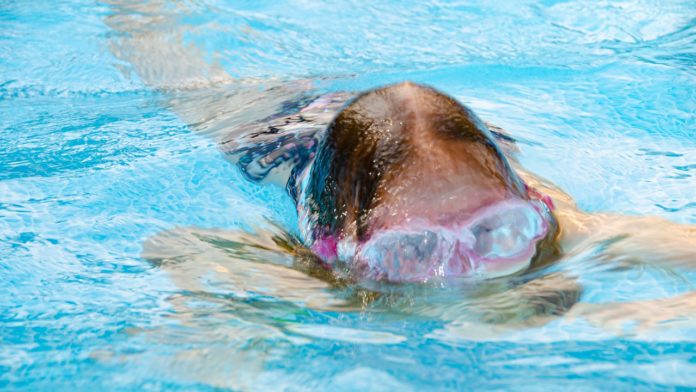Five years ago, now 12-year-old Senna’s parents received a letter from the swimming school.
Senna, who suffers from a developmental disorder, had to stop swimming. There was no progress. But, Mark had other ideas.
He and his home care organisation have supported Senna and her parents with all kinds of things for more than five years. Mark and a swimming school called Lizzy managed to teach Senna to swim after all.
‘Incredible’
“It’s incredible what she’s achieved through the years,” Mark says. Senna (12) suffers from Rett Syndrome. This is a neurological disorder that mainly affects girls.
“Their life expectancy isn’t always great.” In most cases, sufferers end up in wheelchairs. Mark often works with children who don’t have long to live.
His children’s home care organisation is called Tikkie Anders. Through it, Mark helps kids with multiple, complex disabilities. This applies to Senna, who has the mental function of a four-year-old.
Special swimming school
It angered and saddened him when she had to stop taking swimming lessons. Lizzy is a swimming school, especially for children with mental disabilities. There, Senna got to swim, after all.
“The swimming teachers Lizzy and Liesbeth only have four children per class. But Senna couldn’t keep up,” Mark says. It takes her brain a little longer to signal her muscles.
So processing takes significantly longer. Mark noticed this while Senna was swimming too. “Once she gets in the water, her brain has to signal her body to start swimming,” he says.
Help
After sitting on the side a couple of times, Mark got into the water with Senna. He helped her practise her strokes and kicking. Mark comes from the swimming world and knows how to teach.
“Even if Senna wasn’t moving, I’d let her go. And, of course, help her quickly again. She’d cough and wheeze. I tell her she has to move. Otherwise, she’ll sink. And that she has to cough the water out.”
“There was a lot of crying in the beginning. But I told her, every single time, how proud I was of her. That she had persevered”, Mark says.
Senna was wrapped in flotation devices as well as a life jacket. She had to feel completely safe. “Over the last five years, we slowly phased out the aids.” And Mark wanted to stop swimming with her.
‘Must help herself’
He wanted to sit on the side. “Should Senna ever end fall into a body of water unexpectedly, it’s vital that she can help herself. That’s why Mark lets Senna swim fully clothed.
Last week, for the first time, Senna swam four 25-metre laps. Unaided. “It was an emotional moment. She had confidence in her own ability,” Mark says proudly.
Senna will continue swimming. “We must keep training her muscles and brain. That’s to keep her physical condition optimal. Then we can postpone that wheelchair for as long as possible”, Mark concludes.
Source: Studio040
Translator: Bob
Editor: Melinda Walraven
















